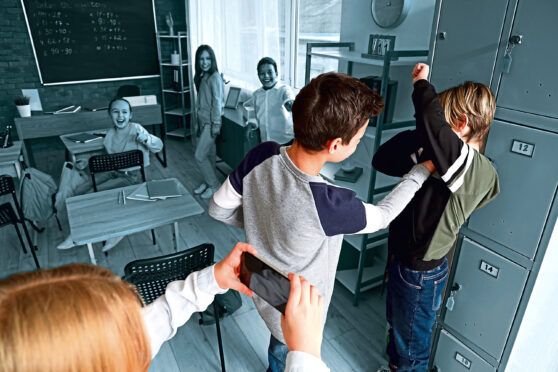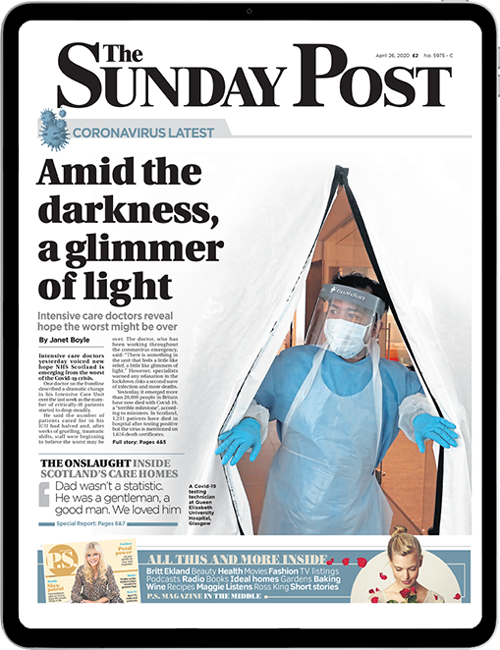
A leading educationalist has called on schools chiefs to properly address disruption and violence in classrooms.
Professor Lindsay Paterson believes schools must ban mobile phones in classes and immediately suspend pupils who are physically violent towards staff or classmates.
Paterson, a professor at Edinburgh University, made his remarks in the wake of a survey published last mEonth, which found alarming levels of violence in schools.
The Sunday Post has revealed shocking levels of misogyny in schools, with male pupils openly stating opinions linked to the “incel” movement.
In the survey on behaviour in schools by the NASUWT union, 49% of female teachers said they had suffered physical abuse or violence from pupils in the previous 12 months, compared to 36% of male staff. And 90% of all staff surveyed said they had suffered verbal abuse.
A total of 476 teachers in Scotland took part in an online survey for the union and the results showed 83% thought discipline had declined.
Paterson said: “The mobile must be banned from the classroom with immediate effect. It should be in a corridor locker or ideally at home – not in a pupil’s bag beside their desk.
“The benefits are three-fold; a reduction in pupil distraction, a reduction in classroom disruption, and an end to cyber bullying – at least during the school day.”
His remarks follow the defeat of a Conservative-proposed amendment in the Commons last month for a ban on mobile phones in English schools.
Turning to verbal and physical violence, Paterson called for no tolerance of those who kick, bite, scratch, swear and lash out at teachers and fellow pupils.
“There must be immediate suspension for acts of violence. No ifs or buts. If a crime is committed, the police should be contacted. Not all misdemeanours merit police action but violence is clearly one which must be reported.”
Mike Corbett, Scottish secretary of NASUWT, agreed that police action is often necessary. He said: “Our advice to teachers is: If it occurred in the street, you’d report it – the fact it’s in the classroom makes no difference. It’s still a crime and should be reported.”
Corbett insists that head teachers are not doing enough. “They are not imposing consequences for bad behaviour,” he said. “They are not utilising the full range of sanctions available. Having restorative chats with pupils and parents after minor disruption is fine but serious offences such as verbal or physical assault call for serious consequences. I know rectors fear defying their local authority employers, but they must ignore exclusion quotas and protect their staff.”
The union leader regards the government’s response to classroom violence as inadequate. “The Scottish Government points to a National Action Plan but there’s been no difference in pupil behaviour or sanctions imposed,” he said. “Our recent survey found 80% of teachers were threatened in the past year and 60% considered walking away from the job.”
Paterson feels school management’s failure to punish low-level rule flouting can escalate to “anything goes”.
“Psychologists call it the broken window syndrome. If a window isn’t repaired or boarded up, it’s similar to ignoring bad behaviour. It sends the wrong message and before long even those who normally do no wrong are getting in on the act.”

Enjoy the convenience of having The Sunday Post delivered as a digital ePaper straight to your smartphone, tablet or computer.
Subscribe for only £5.49 a month and enjoy all the benefits of the printed paper as a digital replica.
Subscribe © Supplied
© Supplied